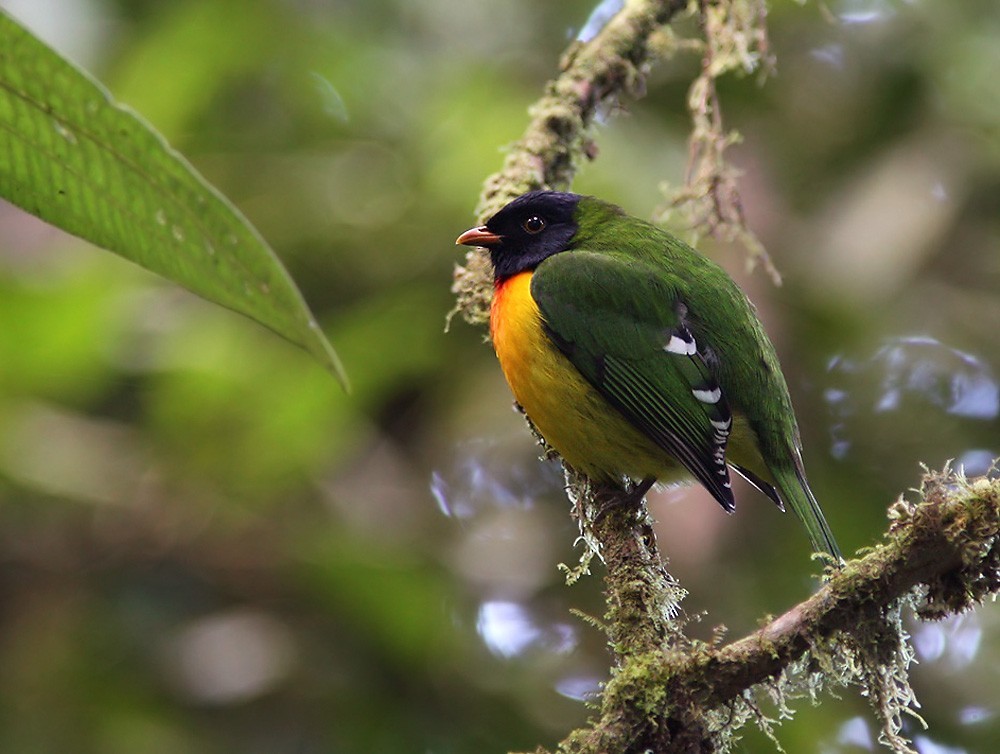Handsome Fruiteater
A species of Typical Fruiteaters Scientific name : Pipreola formosa Genus : Typical Fruiteaters
Handsome Fruiteater, A species of Typical Fruiteaters
Botanical name: Pipreola formosa
Genus: Typical Fruiteaters
Content
Description General Info
 Photo By Lars Petersson
Photo By Lars Petersson Description
The male handsome fruiteater has a black head and throat, and green upper parts, with pale tips to the tertial feathers of the wings. It has a bright orange upper breast and a yellow belly. The female lacks black on head and throat but otherwise has similar green upper parts, including white-tipped tertials. The throat is green above a small patch of yellow. The rest of the underparts are either barred or scaled in green and yellow. The male is distinctive as no other fruiteaters within its range have a similar orange breast. The female can be distinguished from the golden-breasted fruiteater (P. aureopectus) as the female golden-breasted fruiteater does not have a yellow chest patch and has streaked underparts instead of barring seen in the handsome fruiteater. 
Size
18 cm
Nest Placement
Tree
Feeding Habits
Handsome Fruiteater primarily consumes small fruits, either from a perched position or by performing a brief upward sally and hover. Occasionally, handsome Fruiteater may join mixed-species flocks to feed.
Habitat
The handsome Fruiteater primarily resides in humid to wet premontane and montane forests. These environments host a rich diversity of plant species, providing ample fruit resources for the handsome Fruiteater to feed upon. These birds are known to inhabit dense, lush vegetation that offers both food and cover within broader tropical regions.
Dite type
Frugivorous
General Info
Feeding Habits
Bird food type

Fruit
Distribution Area
The handsome fruiteater is native to the mountains of northern Venezuela where its habitat is humid forests at lower and medium elevations, ranging between about 800 and 2,200 m (2,600 and 7,200 ft) above sea level. It occupies two separate disjunct areas. 
Species Status
This bird is endemic to Venezuela and has a relatively small range, but it is reported as being fairly common. Its total population is unknown but the population trend seems to be stable so the International Union for Conservation of Nature has assessed the bird as being a "least-concern species". 

 Photo By Lars Petersson
Photo By Lars Petersson Scientific Classification
Phylum
Chordates Class
Birds Order
Perching birds Family
Cotingas Genus
Typical Fruiteaters Species
Handsome Fruiteater